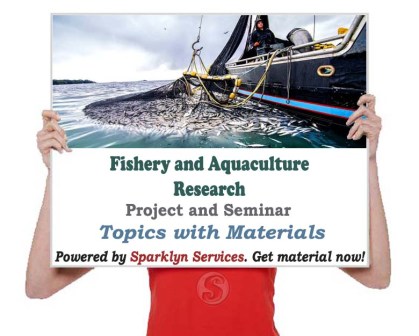1.0 Introduction
1.1 Background To The Study
The Aquaculture Compendium is an encyclopedic, multimedia tool that brings together a wide range of different types of science-based information to support sound decision-making in aquaculture and aquatic resource management worldwide. It is comprised of information sourced from experts, edited and compiled by an independent scientific organization, and resourced by a diverse international Development Consortium. The datasheets are enhanced with data from specialist organizations, images, maps, a bibliographic database and full text articles. New datasheets and datasets continue to be added, reviewed and updated (Wikipedia, 2016).
Aquaculture compendium covers fish, molluscs, crustacea, algae and live feed culture in marine, brackish and freshwater environments, including: Production, health and husbandry/Engineering and technology/Economics, economic development and marketing/Environment/Governance, trade, legislation and social impact (Scott, 2003). Increasing pressure on wild capture fisheries from rising global demand for fish and other aquatic resources has resulted in moves to promote the potential of aquaculture, or fish farming. Aquaculture has the potential to improve socio-economic conditions and environmental sustainability, both in coastal settings and through preservation of wild fisheries and their associated ecosystems. Asia produced more than 90 per cent of all global aquaculture products as well as providing an important source of food security and dietary protein (Scott, 2003).
Despite this aquaculture is limited by a lack of knowledge and information. This is particularly the case in the areas of environmental management and sustainability. Knowledge about aquaculture in rural settings is also limited, including from a systems viewpoint. A recent study in Thailand where extension materials were disseminated after development through farmer participatory approaches led to significant yield increases. This shortfall in the knowledge base led to the development of aquaculture compendium (Scott, 2003).
A substantial research knowledge base for rural aquaculture has been developed over the past few years. This knowledge suggests a yield gap between current and potential levels is real for smallholders. Poor knowledge about many areas of aquaculture is the reason, yet much of this knowledge is contained within the research knowledge base. Compendium Technology can be used to organize and present this knowledge to extension networks to help increase information and reduce the existing yield gap.
1.2 Statement Of The Problem
Aquaculture has great potential to improve socioeconomic conditions and environmental sustainability worldwide, but realization of this potential is severely hampered by a lack of relevant knowledge that can be applied to address these goals. The aquaculture compendium is being built to address these needs, and ultimately to contribute towards improving the sustainable livelihoods of people dependent on aquatic resources.
1.3 Aim and Objectives of Study
The aim of the study is to examine the use of aquaculture compendium, its process of development and its benefits. In achieving this aim, the following specific objectives were laid out as follows:
- To provide an overview of the aquaculture compendium.
- To examine the process of development of the aquaculture compendium.
- To examine the benefits of the aquaculture compendium.
1.4 Research Questions
The study came up with research questions so as to be able to ascertain the above stated objectives. The specific research questions for the study are stated below as follows:
- What is the aquaculture compendium?
- What is the process of development of the aquaculture compendium?
- What are the benefits of the aquaculture compendium?
1.5 Significance Of The Study
The following are the significance of this study:
- The outcome of this study will educate on the use of aquaculture compendium, its process of development and its benefits.
- This research will be a contribution to the body of literature in the area of the effect of personality trait on student’s academic performance, thereby constituting the empirical literature for future research in the subject area
1.6 Scope of the Study
This study will cover the use of aquaculture compendium, its process of development and its benefits.
1.7 Limitation Of Study
During the course of this study, there were some problems encountered which stood as limitations to the research work. Some of the limitations include:
- Time Constraint:
The time frame given to accomplish this project was very short due to school academic calendar and it was carried out under pressure which made the researcher not to implement some necessary features.
- Establishment Policies:
Establishment policies posed a serious limitation as most staffs are not ready to release information needed for this research work. There were lots of information needed from the staffs of this establishment to enhance the study which took them time to release or they did not release at all for security purposes, hence the scope was reduced.
- Financial Constraint:
Insufficient fund tends to impede the efficiency of the researcher in sourcing for the relevant materials, literature or information and in the process of data collection (internet, questionnaire and interview).




